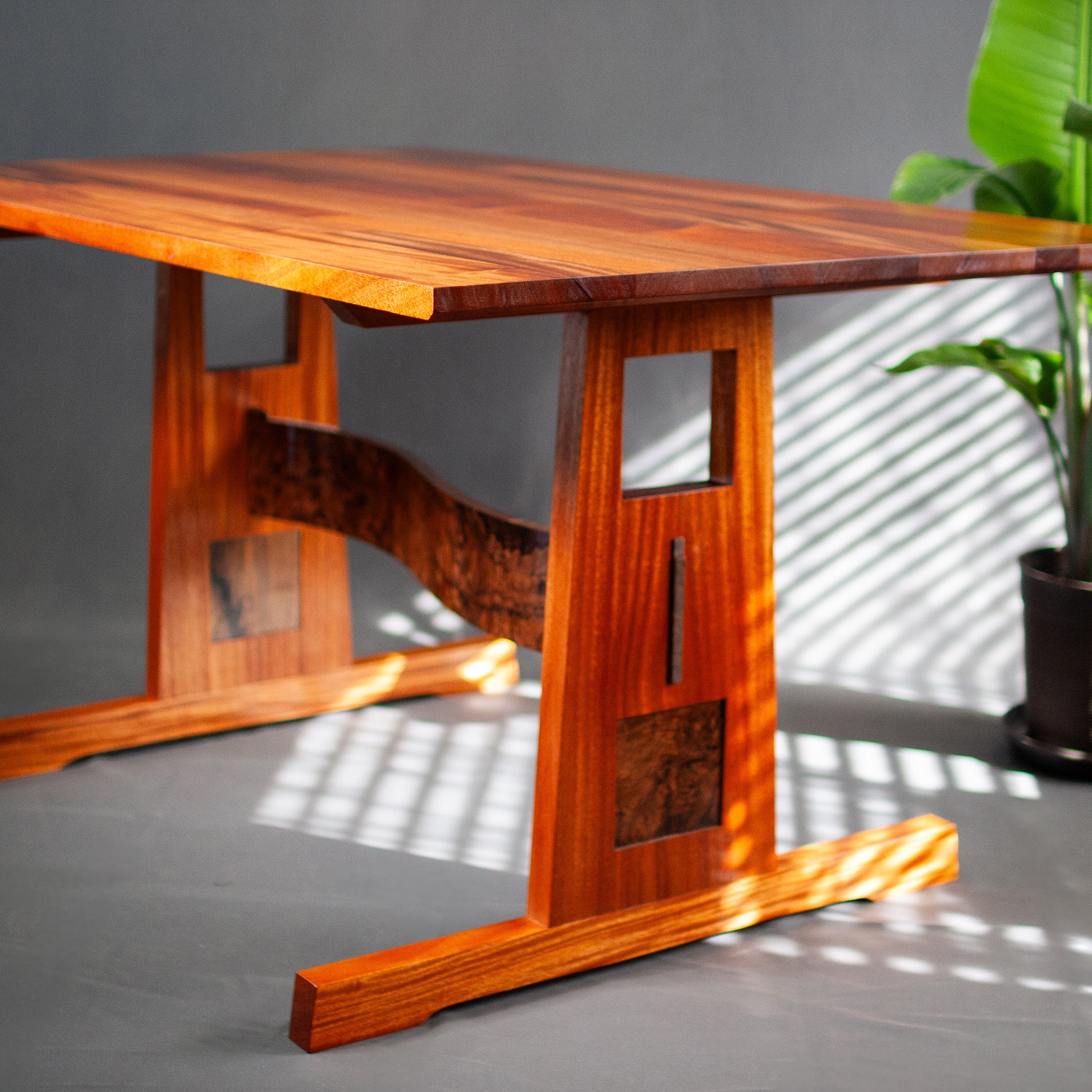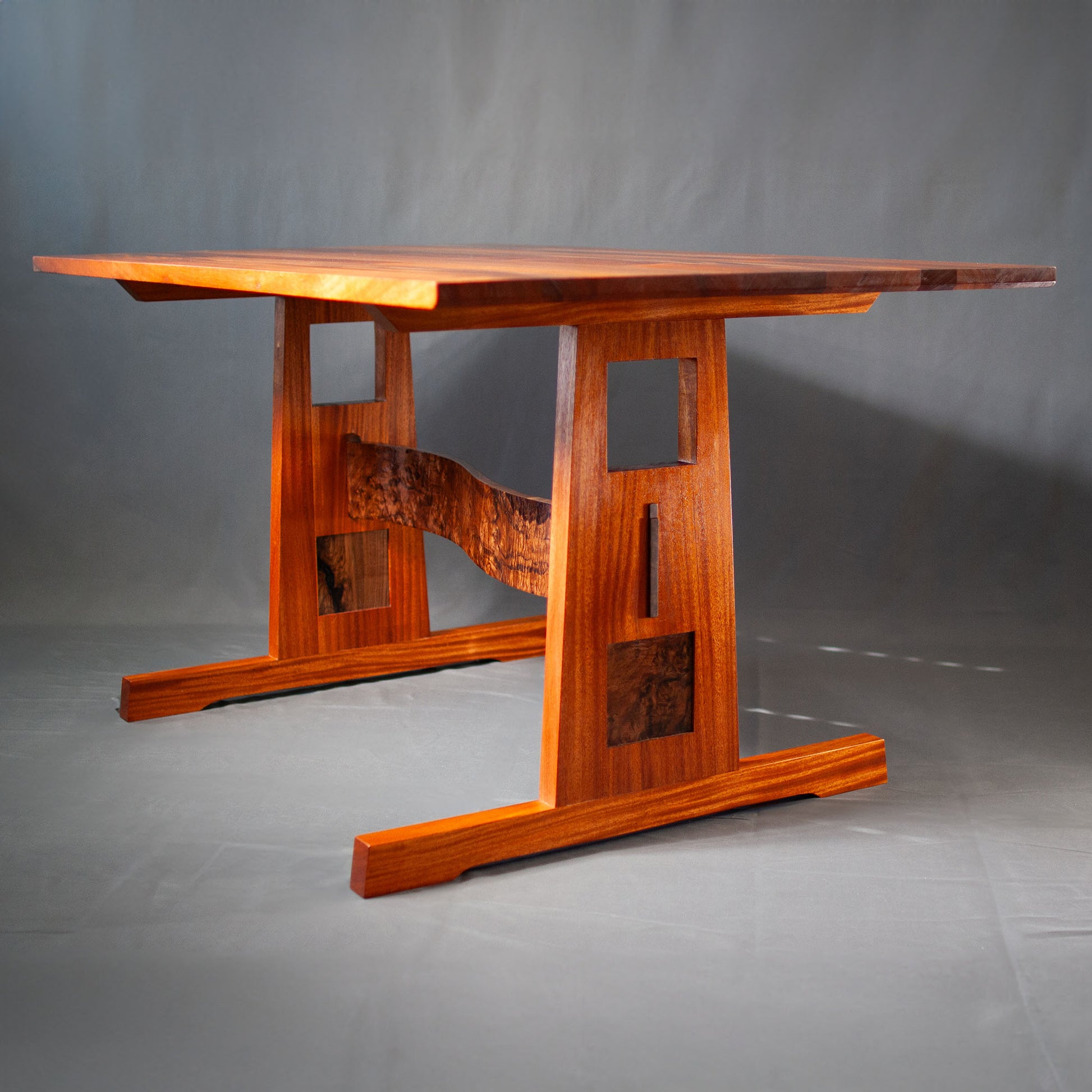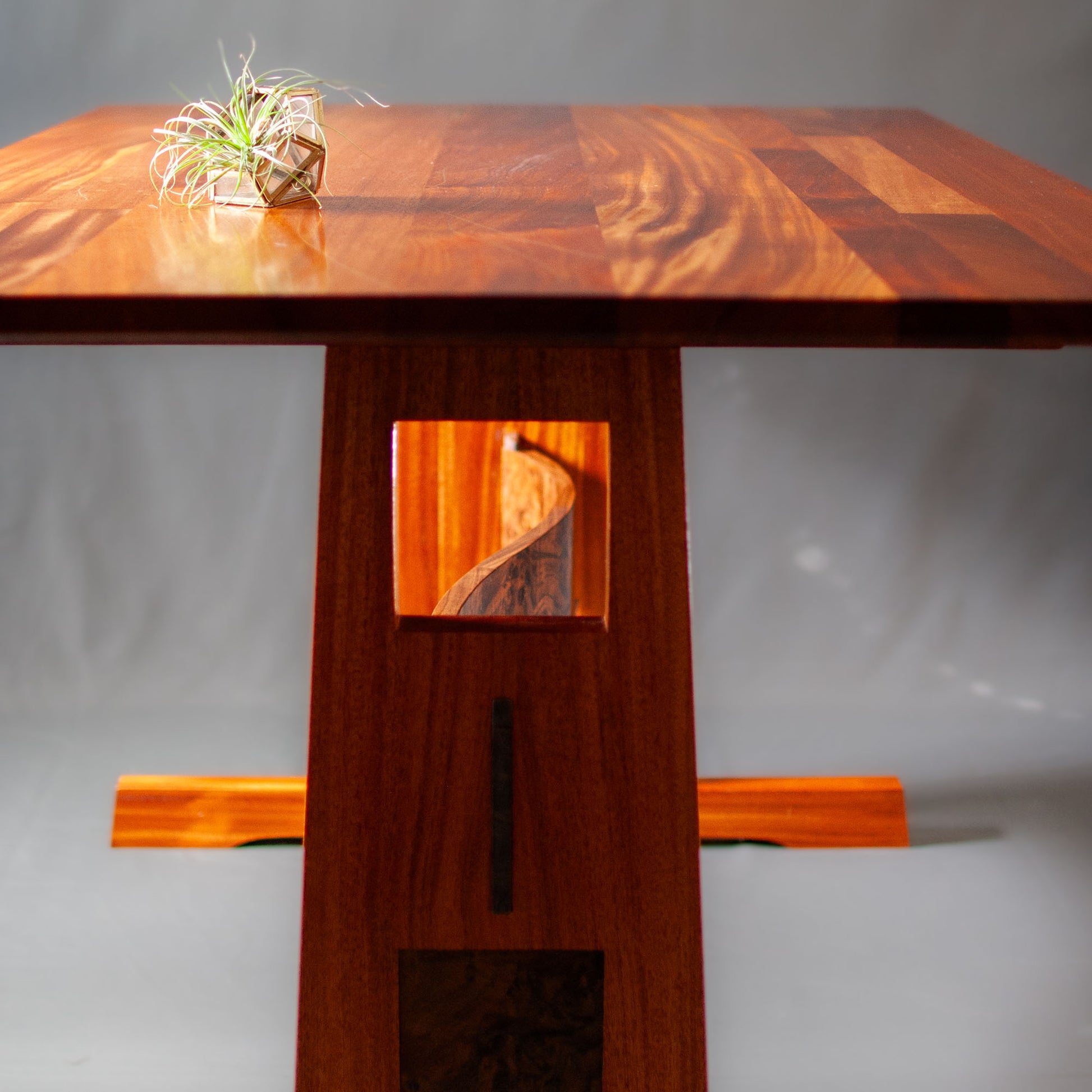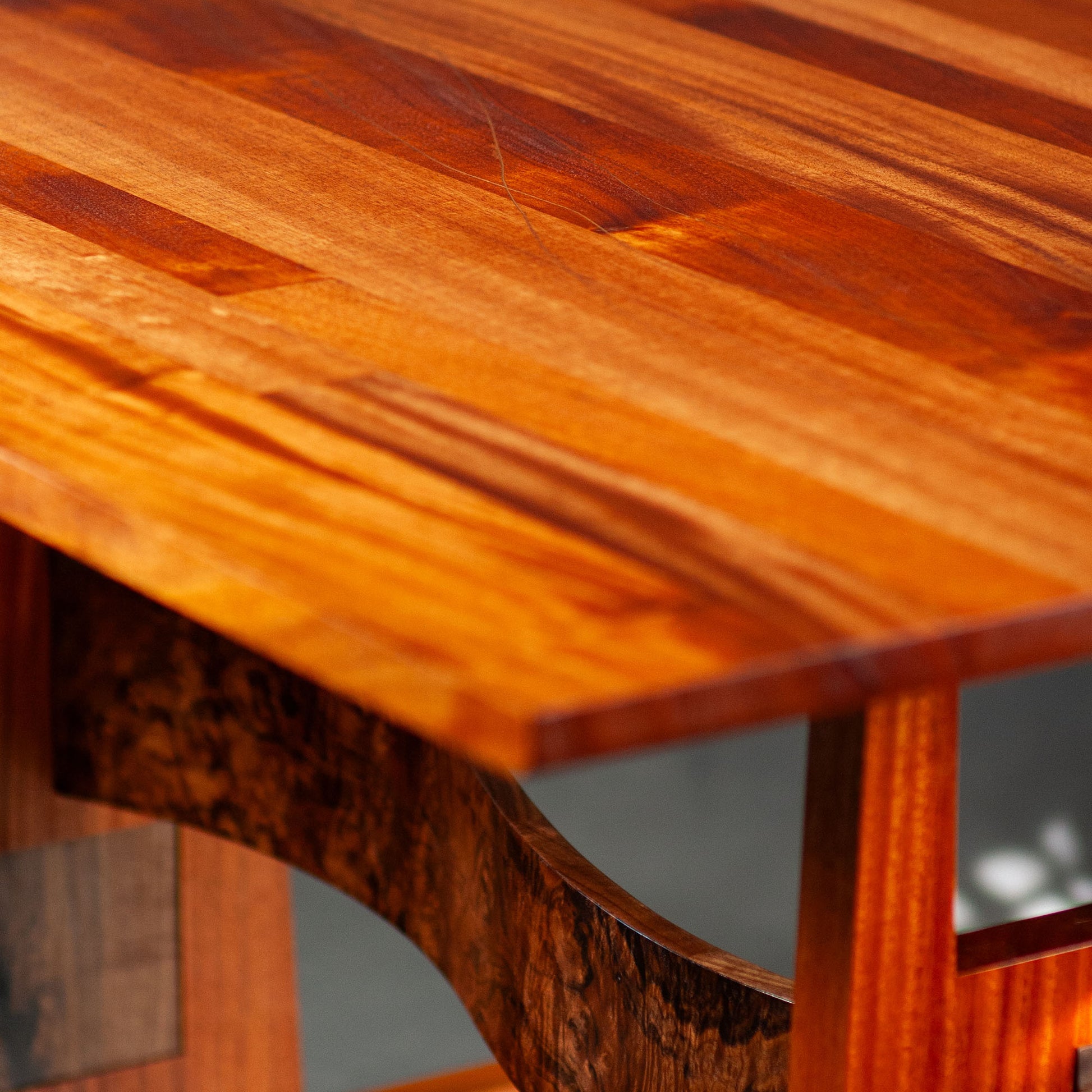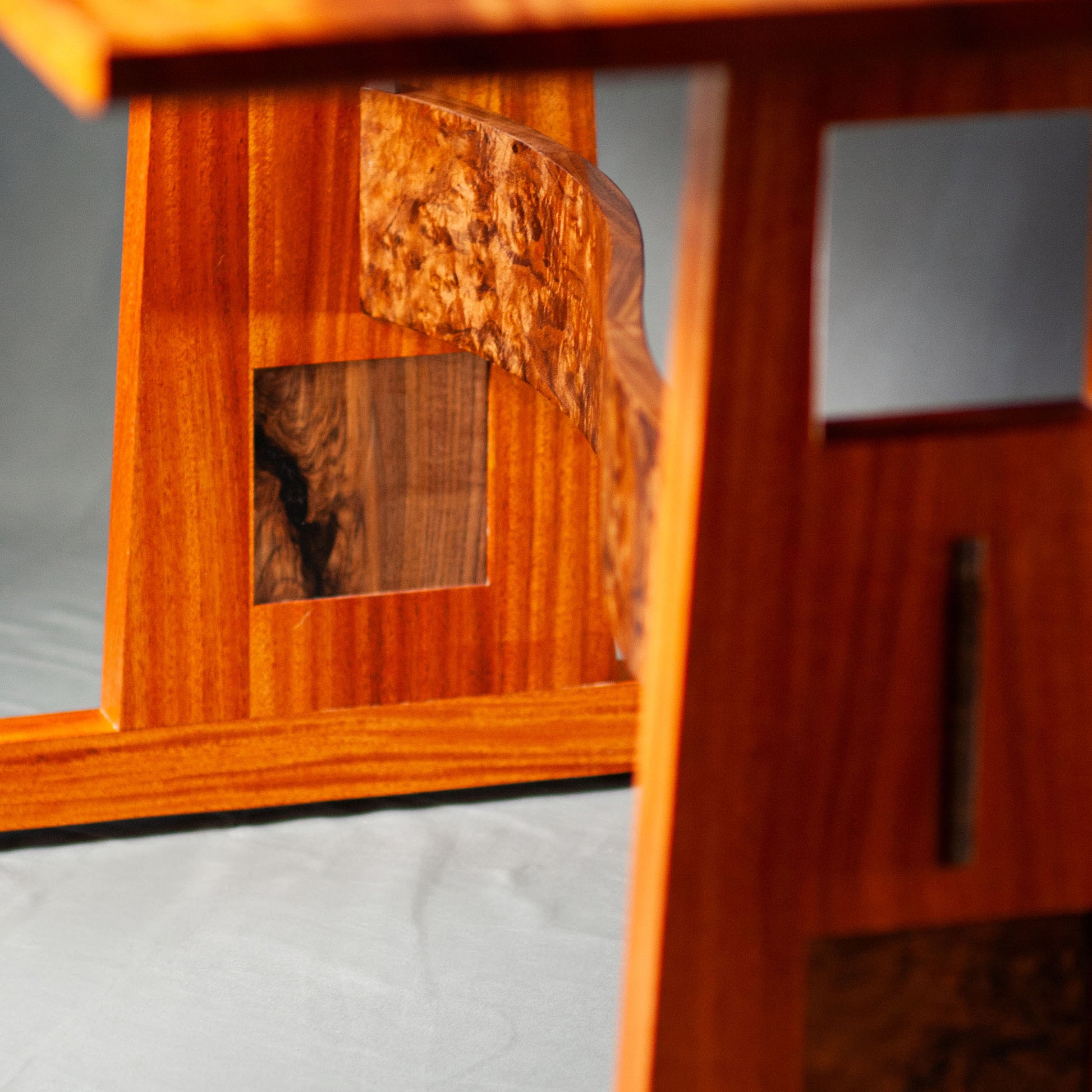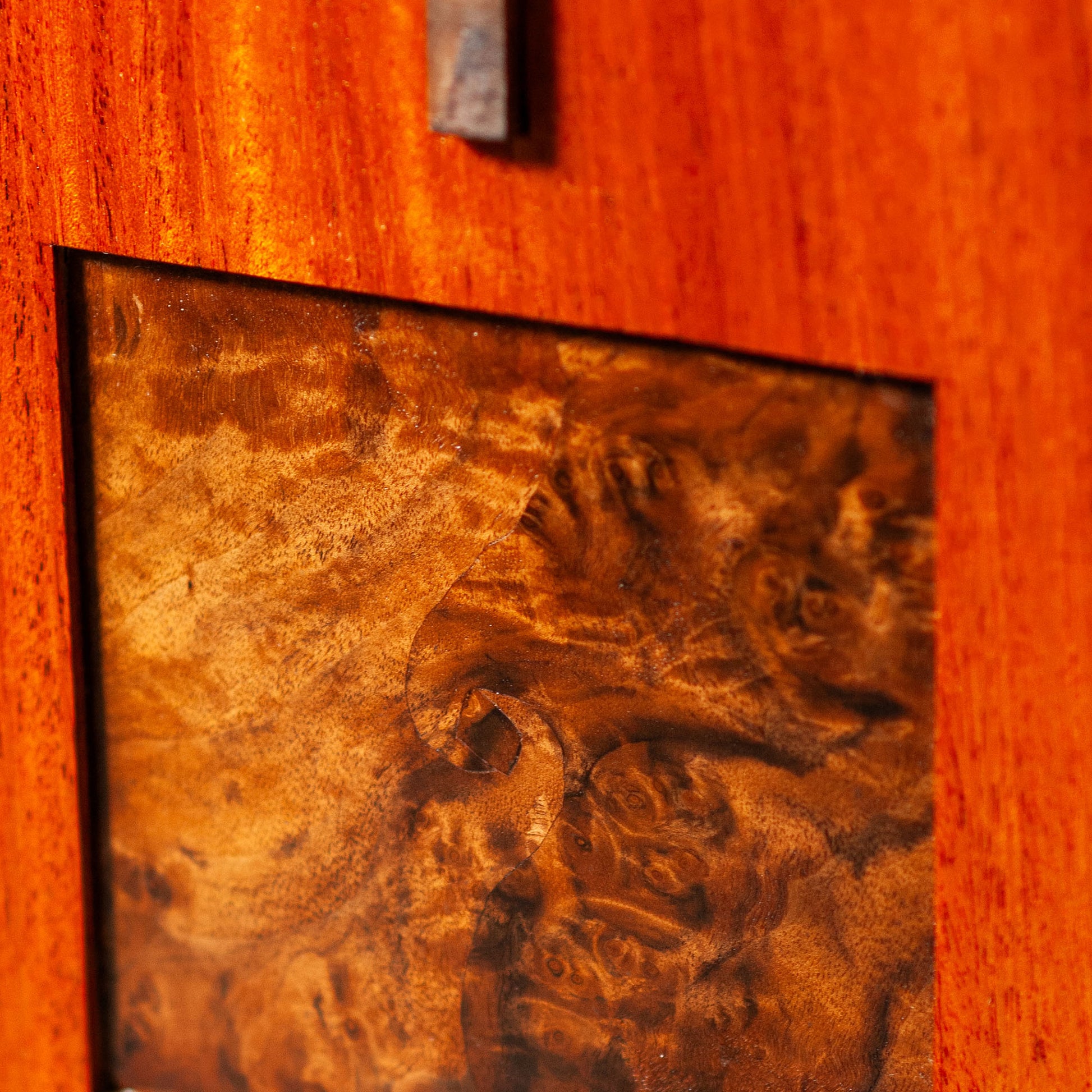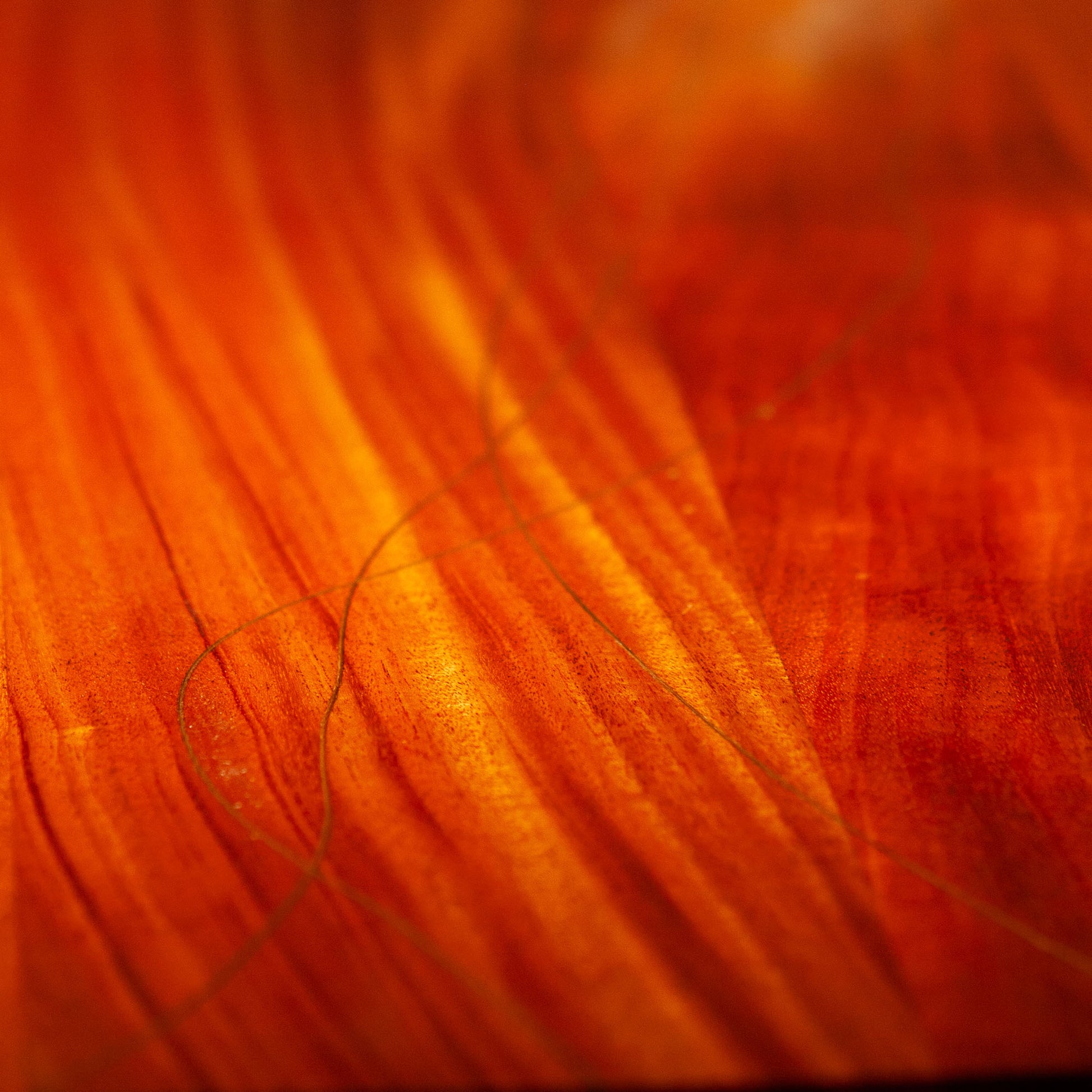Una Raiz Woodworks
Alma de Agua line
Alma de Agua line
Made-to-order
Couldn't load pickup availability
Kitchen & Dining Tables | Made-to-order
Purchase more than one furniture piece of any style and we will send you a rebate of $250 per piece as a special thank you!
In a tree, and its wood, I see a solid monument to water. When it splits, I hear thunder and icebergs cracking. This work is so much bigger than art egos or table or bowls. Water is life, it rushes up the sapwood fountains and down our veins, it binds us together from the start of time, ever powerful in its unending flow. To be like water is to be in alignment. To resist rigidity is to find a deeper strength. My line of Alma de Agua ("Soul of Water") tables is inspired by the way water has shaped and left its mark on the grain of this sacred medium. The table top is cut through the middle in winding paths inspired by the grain of the same piece—meaning that each iteration will feature a unique design—and put back together with a contrasting veneer for a fine flowing detail and point of conversation. The stretcher below hearkens to the lines on the top with a gentle, simplified S-curve. The trestle legs pay homage to design sensibilities found in Spanish, American Indigenous, and Thai woodcrafts that inspire me, and feature a "window" for additional perspective of the curved stretcher, as well as a quiet nod to the Taíno symbol for water in a marquetry inlay.

Wood for my Alma de Agua tables is specifically selected for grain figure that amplifies the concept of flowing water, and I offer three different species combinations depending on your design needs: 1. African Mahogany and Walnut Burl, for rich, chocolatey colors with subtle contrast; 2. Cherry and Curly Maple for tones that are more mid-range but offer greater contrast; or 3. Alder and Curly Maple, for a brighter color scheme with subtle but noticeable contrast.

Features
Kitchen Table - 4 Seater
Kitchen Table - 6 Seater
Dining Table - 6 Seater
Dining Table - 8 Seater
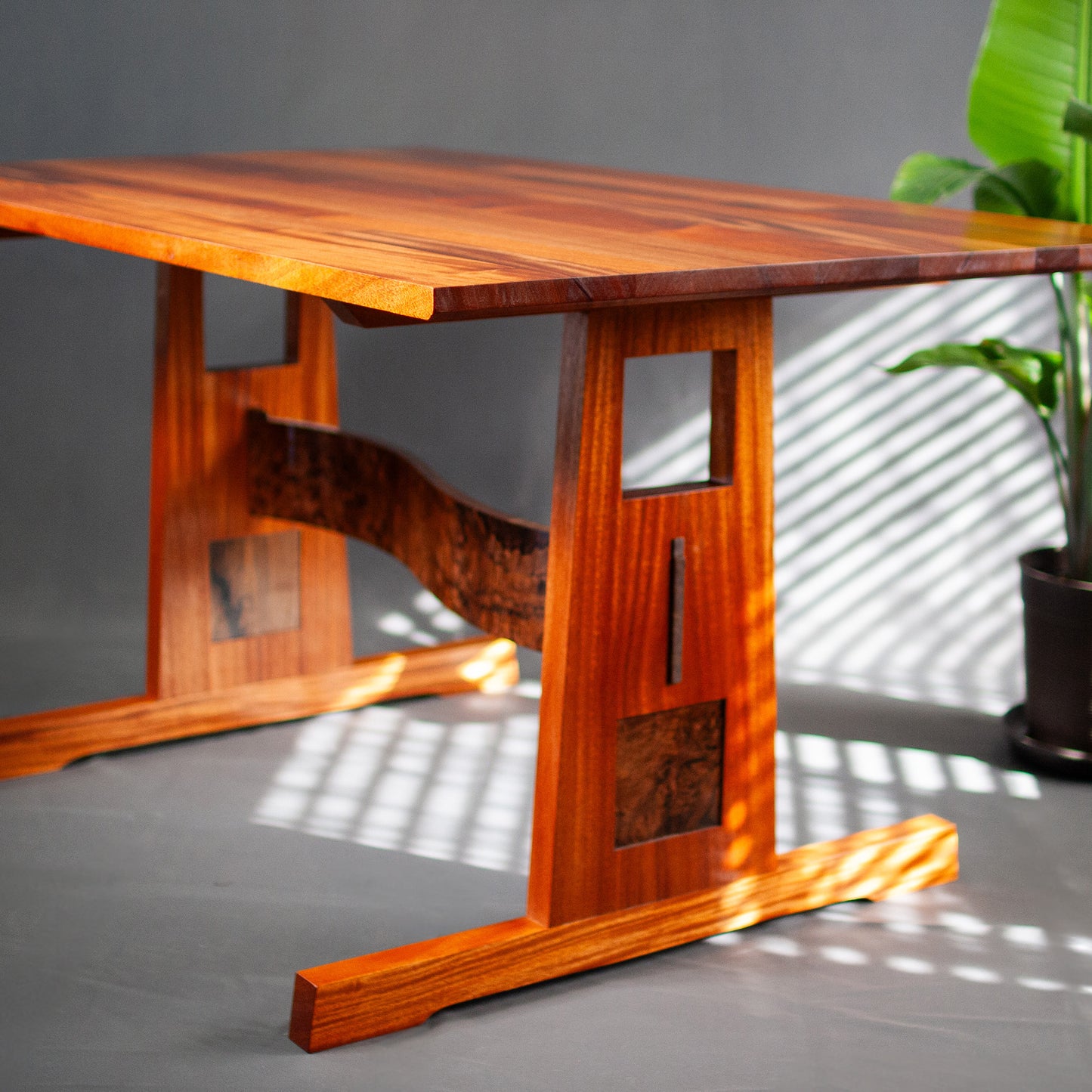
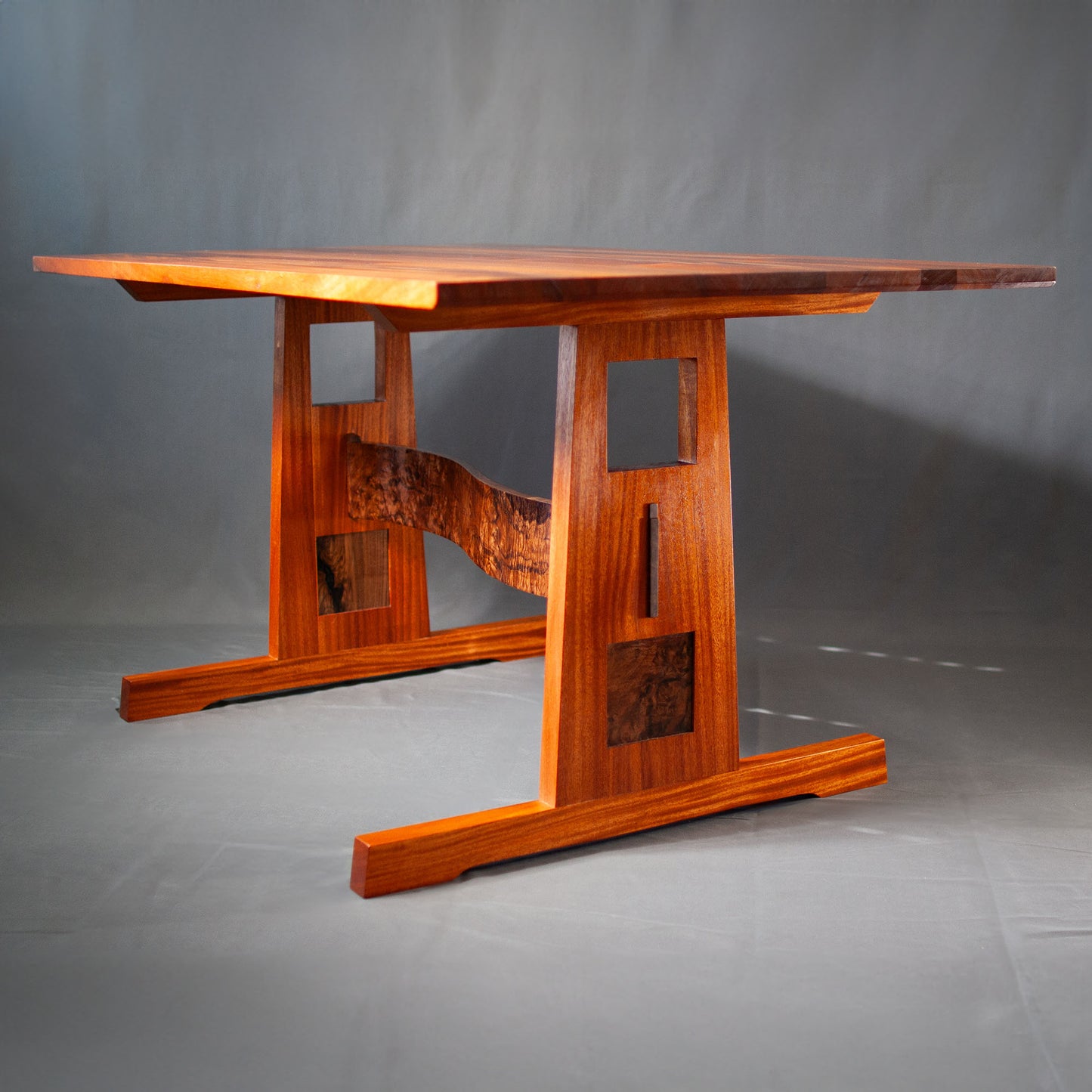
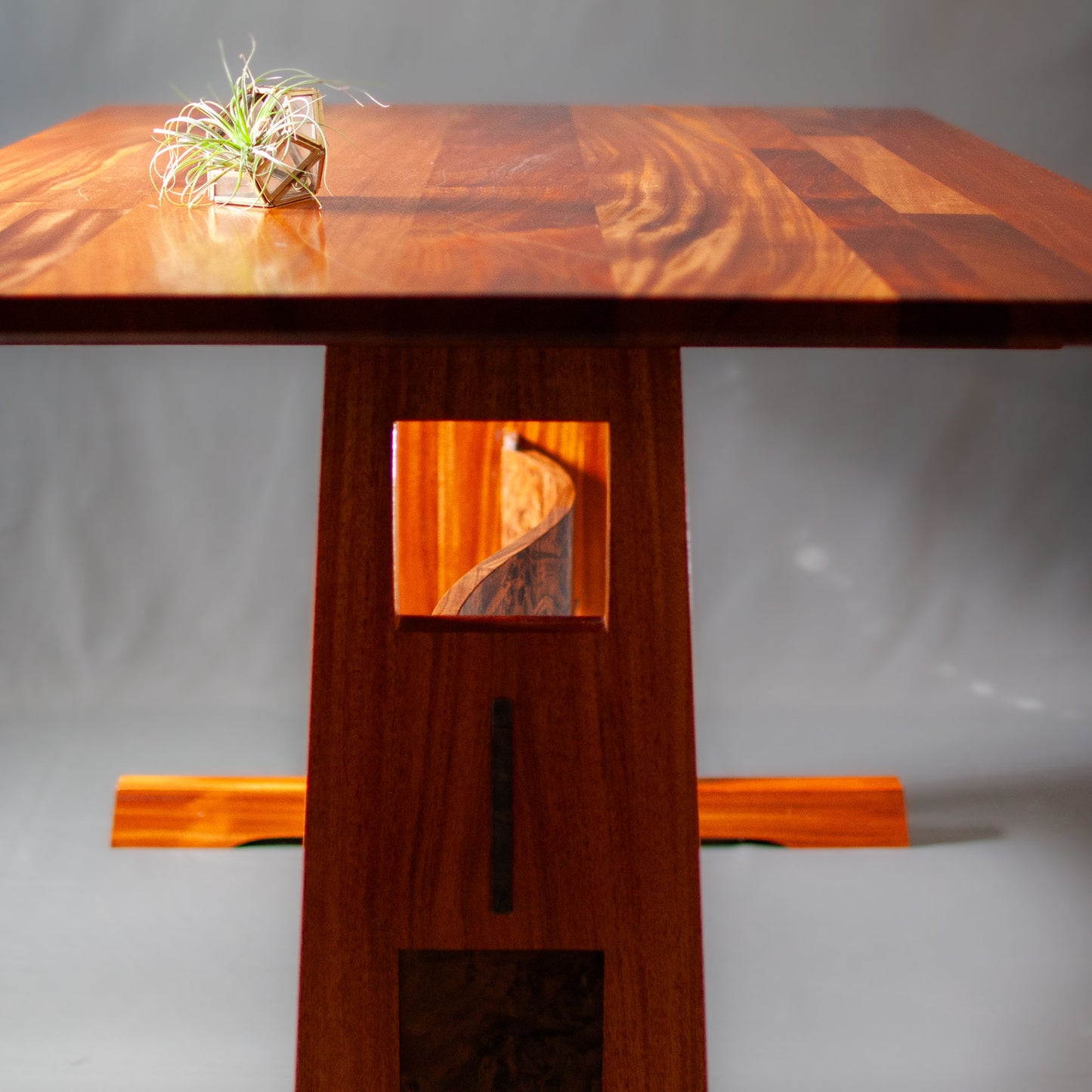
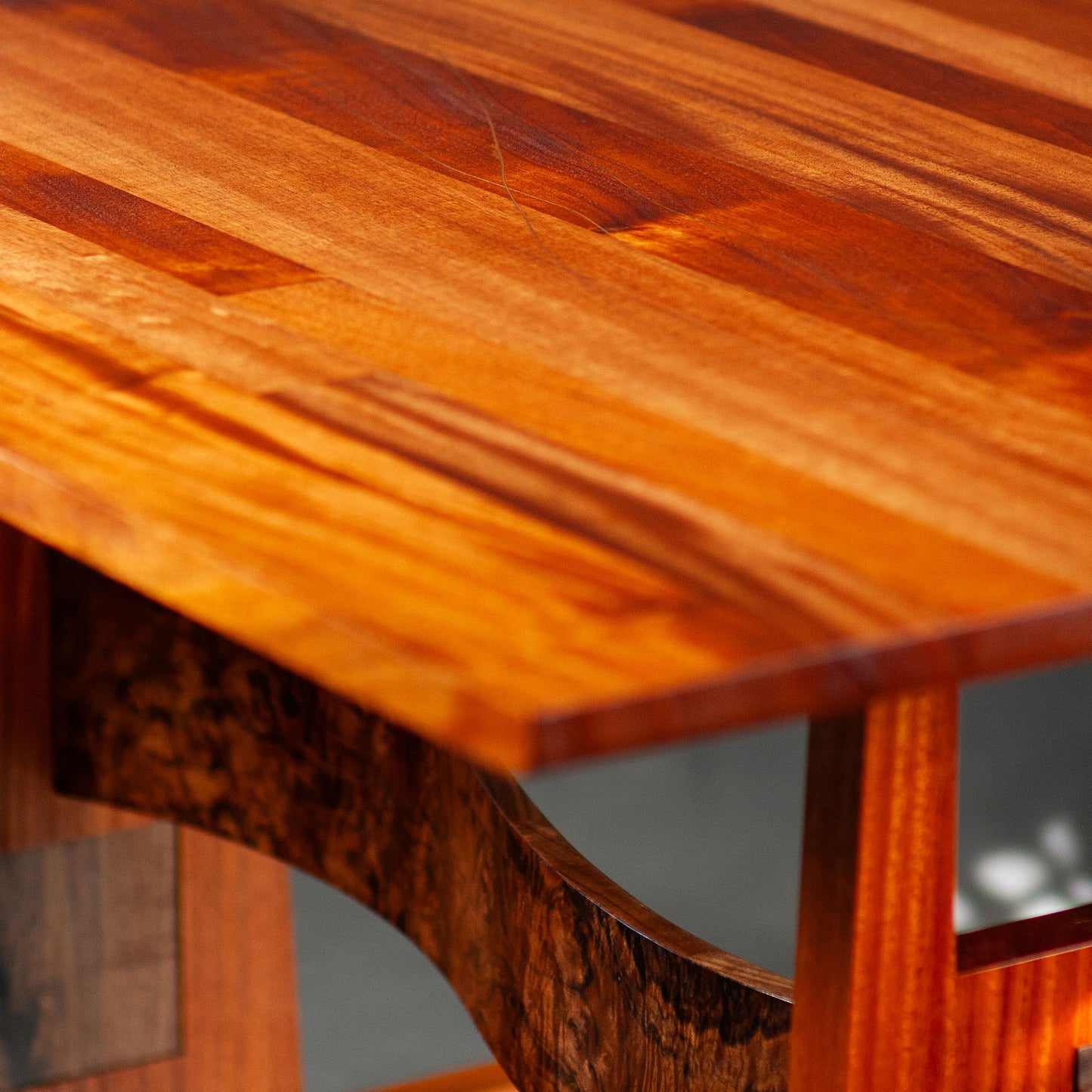
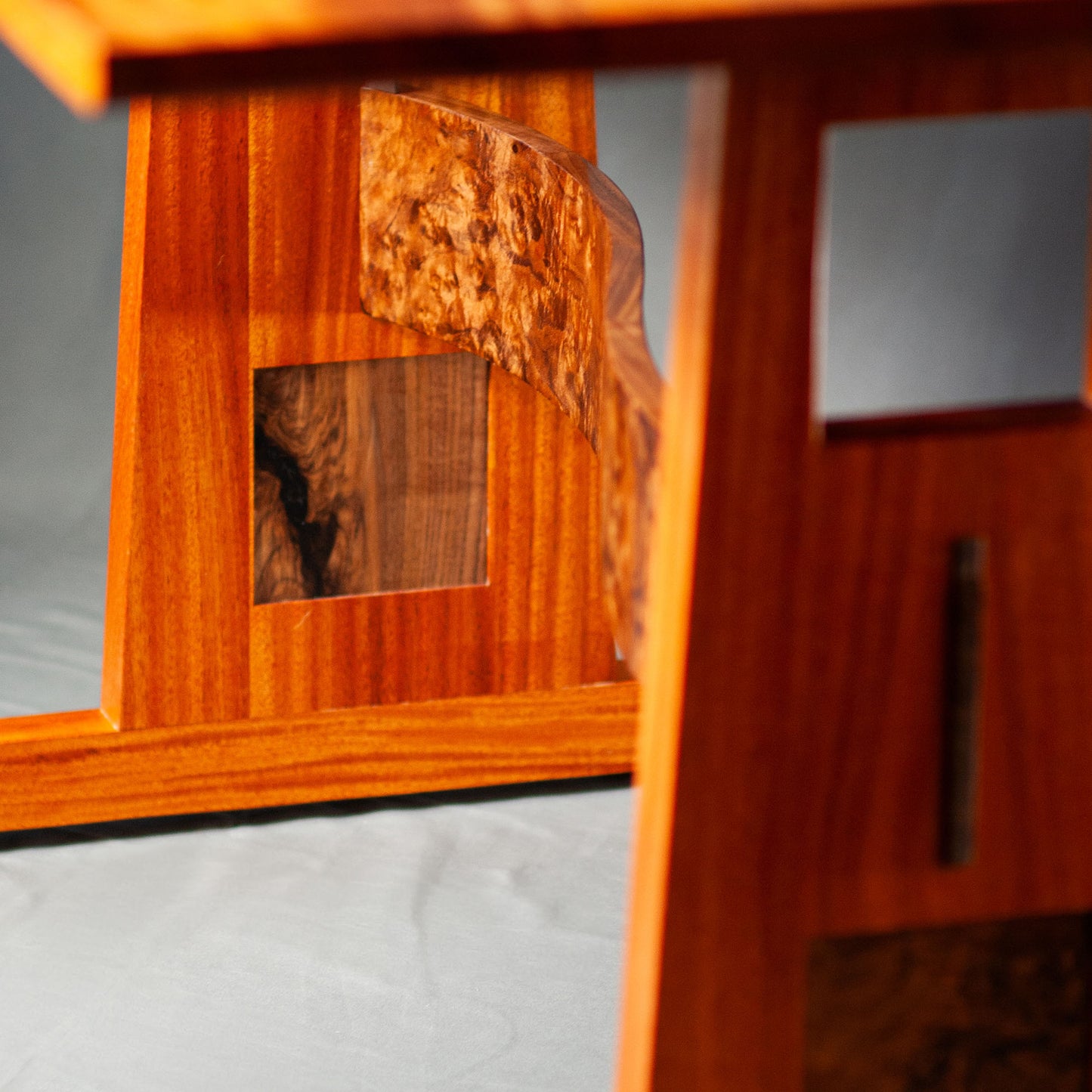
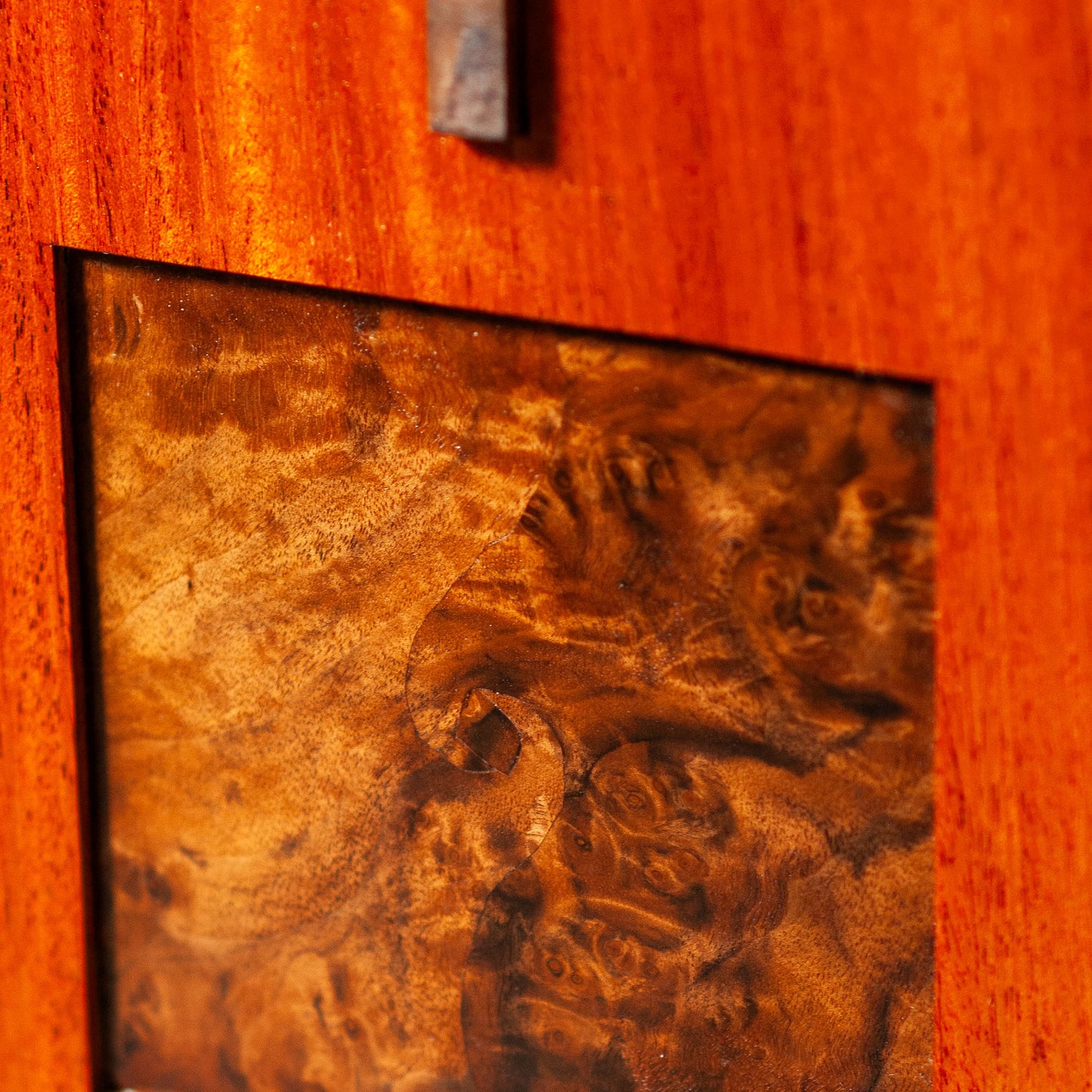
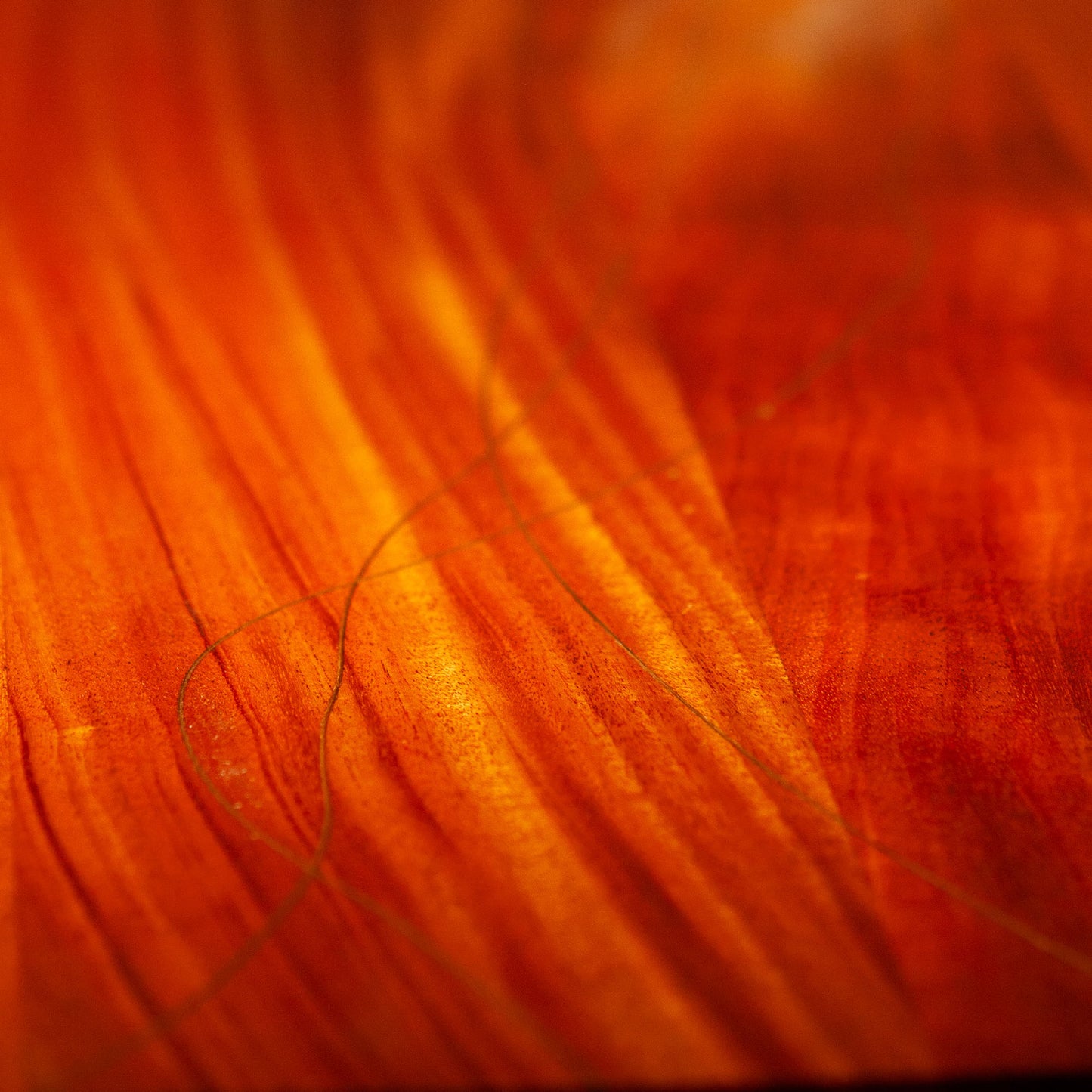
Care & Food-Safe Finishes
Caring for Kitchenware:
Handwash your food-contacting woodware with warm water and dish soap. Bear in mind that soap won't harm wood or finishes, but the water will, eventually. Dry promptly after washing and avoid soaking for extended periods of time.
Should the finish start to look "thirsty," treat with safflower or walnut oil; let soak for 10-20 minutes, then wipe off all excess and allow to dry. (See A Note on "Food-Safe" Finishes below for more information.)
A well cared for wooden utensil is sanitary and can last lifetimes.
Not dishwasher safe. Do not microwave or refrigerate.
Caring for Furniture:
To dust your furniture, simply wipe with a damp (not wet) cloth or chamois. Dirt is water soluble. In rare cases where there is too much grime for general cleaning, you may dampen your cloth (still not wet) with a solution of mild soap and water.
Commercial liquid polishes won't necessarily damage the finish on your piece, but they're generally unnecessary and will in fact remove the longer-lasting beeswax polish your furniture will already come bearing. They also don’t provide a most of the benefits claimed by marketing, such as "feeding" or "moisturizing" the finish or the wood with "missing oils." Wood doesn't need oils added to it, and moisturizing it would actually be a bad thing. So I guess it's good that those claims are false!
The purpose of the beeswax I've applied to your furniture is to function as a polish over the finish, and to help prevent damage to the finish from bumps and friction. If over time you feel that your piece could use some fresh shine and protection, feel free to clean the surface, then polish with furniture paste wax, being sure to remove all excess. If buffed correctly, wax will not build up as many liquid polish brands claim. If you are unable to use wax, silicone polish can add a decent amount of shine and protection, but please be advised that this could potentially pose problems should your piece need refinishing down the line.
To extend the life of your finish and therefore the wood beneath it, try to adhere to the following parameters whenever possible:
- Place your furniture away from direct sunlight, or make use of curtains and shades when possible. You may choose to cover especially precious pieces with a tablecloth (not plastic) if leaving for extended periods of time.
- Use trivets, coasters, placemats and tablecloths.
- To prevent the speeding up of oxidation, don't store your furniture in a very hot room such an attic or unconditioned storage facility.
- Use paste wax as outlined above to help reduce surface friction.
A Note on "Food-Safe" Finishes
There is an unfortunate thunderstorm of misinformation in the world about wood finishes in general, and perhaps the most unfortunate is the myth of the food-safe wood finish—a myth that gets propagated by marketing, woodworking publications, and even respectable, fellow woodworkers because they are simply unaware. I consider it one of my highest privileges in my woodworking education that I had a course dedicated solely to finishing, as I, too, would have been a cog in the myth-spreading machine otherwise.
The myth goes: any finish containing metallic driers (i.e. boiled linseed oil, varnish, etc.) will harm you if used on a food-touching surface. But the truth is that all modern wood finishes are in fact food-safe so long as they are fully cured (please do not drink varnish!!!). Even certain finishes marketed as "food-safe" are in fact thinned varnish and nothing more.
So where'd this myth come from? Once upon a time, humans laced paints and finishes with lead as their metallic drier. That's it. You can see where it went. It wasn't good. But we don't do that anymore. Even humans can learn to do better every once in a while.
That being said, I don't much fancy the possibility of my bowls starting to peel and getting flakes of film finish in my food, or the idea of beeswax melting into my meals and ruining my carefully crafted recipe. And so my personal favorite choice for food-contacting woodwork is a blend of curing oils and thinned varnish. This results in a penetrating finish (as opposed to one that builds up into a film that could flake over time) that is longer-lasting and more protective of the wood than a simple oil finish.
And in case you've noticed that I recommended safflower or walnut oil to replenish your goods at home, there's a reason for that! A. it's a much more pleasurable experience for you, and B. you don't have to worry about the finish causing you harm should you decide to use your spoon before it's fully cured. Unless you're allergic to walnuts or safflowers. In which case, please don't put something you're allergic to in your food.
Thus concludes this wood-loving geek's rant on food-safe finishes. Thank you for your time! Now go! Take a look around! Enjoy life knowing things you maybe didn't know that you didn't know!

